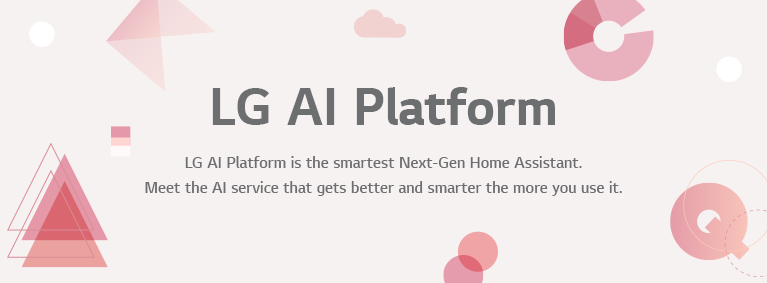Develop AI Products and Services
LG AI Platform provides intelligent AI technologies that allow computing devices
to understand and judge the situations around them on their own without needing the instructions from customers.
The platform technology has been applied to various AI services such as home appliances, automobiles, signage, chatbots, etc.
for various AI services such as home appliances, automotive, signage, and chatbots.
to understand and judge the situations around them on their own without needing the instructions from customers.
The platform technology has been applied to various AI services such as home appliances, automobiles, signage, chatbots, etc.
for various AI services such as home appliances, automotive, signage, and chatbots.
Develop Environment
Cloud API
REST API helps you developquickly and easily.
Edge API
It helps you develop AI servicesspecialized in specific domains.
OI Technology
Various services can be developedusing OI Technology, which applies the
partner's technology to LG AI Platform.






